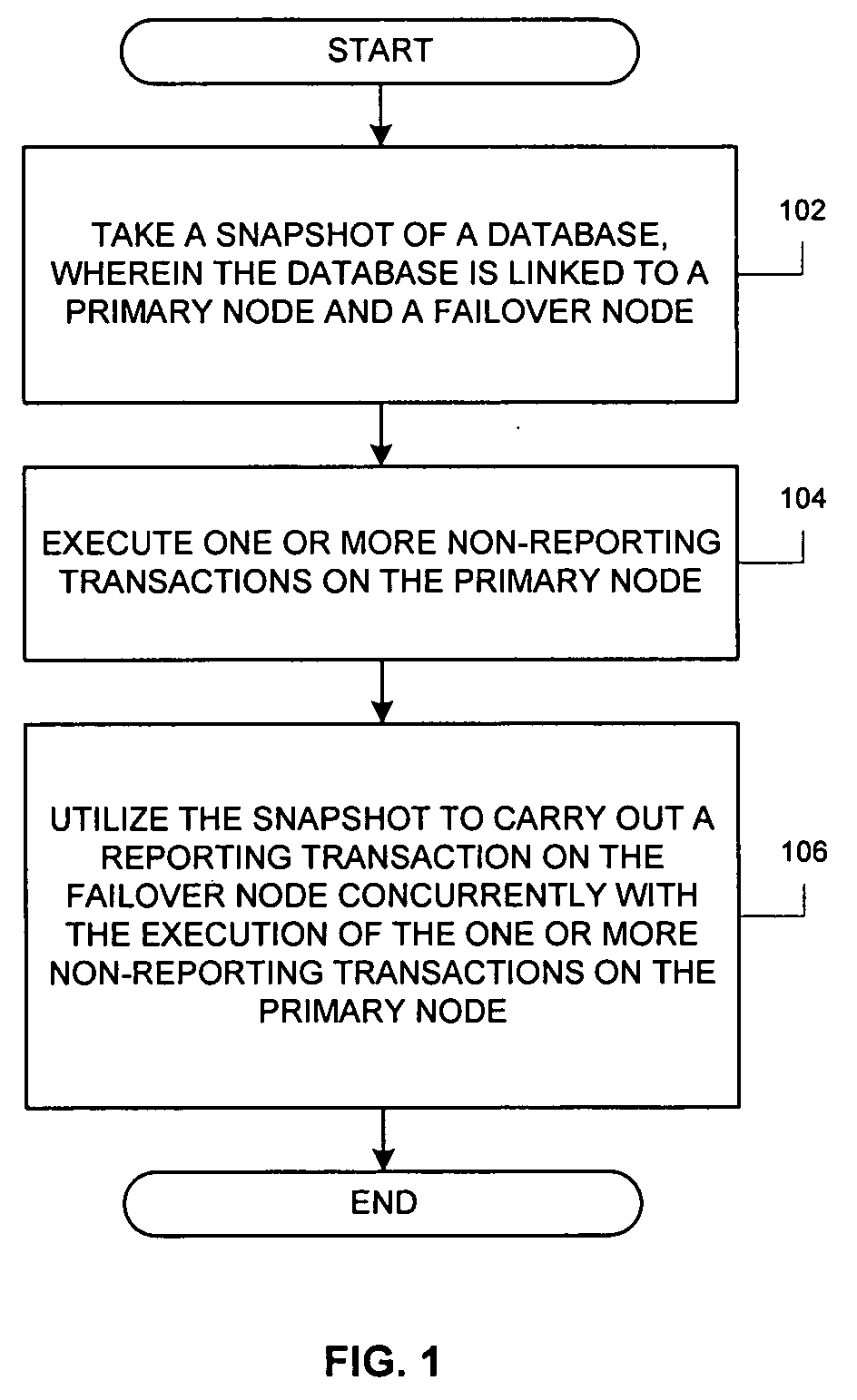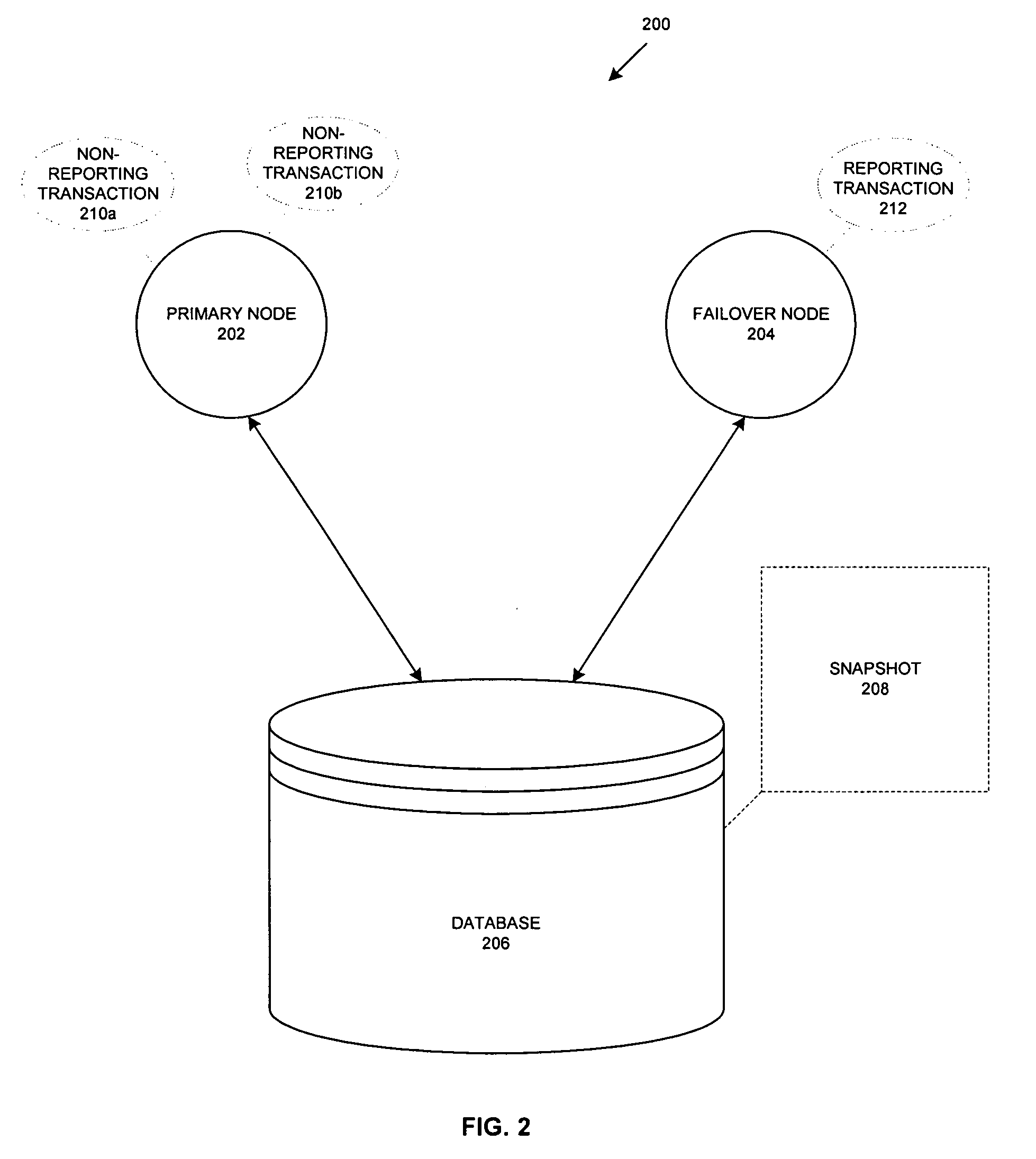Method and mechanism of handling reporting transactions in database systems
a database system and reporting mechanism technology, applied in the field of database systems, can solve the problems of complex concurrency control mechanisms, the failure node cannot be used concurrently with the primary node, and the difficulty of justifying the cost of purchasing additional hardware used, etc., to achieve the effect of double storage costs
- Summary
- Abstract
- Description
- Claims
- Application Information
AI Technical Summary
Benefits of technology
Problems solved by technology
Method used
Image
Examples
Embodiment Construction
[0021] Handling of reporting transactions in database systems is disclosed. Rather than employ an active / active cluster, which requires complex coherency and routing mechanisms, or have a separate replicated database, which entails purchasing additional hardware, with potentially outdated data, reporting transactions are executed on a failover node using database snapshots concurrently with non-reporting transactions running on a primary node. This utilizes the failover node, which would otherwise remain idle, and provides near real-time reporting when the latest snapshots are used.
[0022] Illustrated in FIG. 1 is a method of handling reporting transactions in database systems. At 102, a snapshot of a database is taken. The database is linked to a primary node and a failover node. In some embodiments, only the primary node is allowed to modify the database. Client connections could be configured to direct all reporting transactions to the failover node and all other transactions to ...
PUM
 Login to View More
Login to View More Abstract
Description
Claims
Application Information
 Login to View More
Login to View More - R&D
- Intellectual Property
- Life Sciences
- Materials
- Tech Scout
- Unparalleled Data Quality
- Higher Quality Content
- 60% Fewer Hallucinations
Browse by: Latest US Patents, China's latest patents, Technical Efficacy Thesaurus, Application Domain, Technology Topic, Popular Technical Reports.
© 2025 PatSnap. All rights reserved.Legal|Privacy policy|Modern Slavery Act Transparency Statement|Sitemap|About US| Contact US: help@patsnap.com



